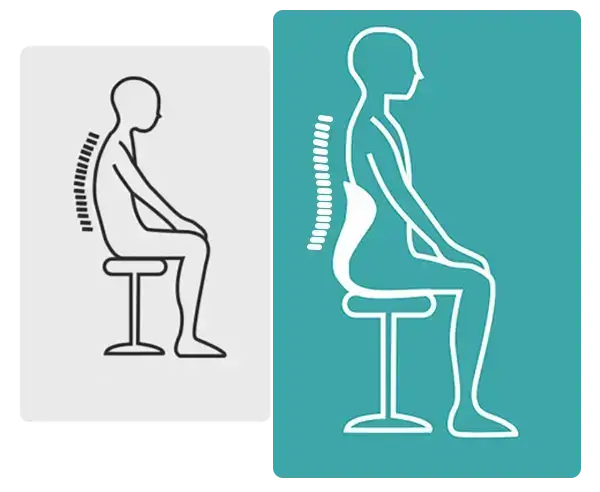7 effective ways to improve body posture and prevent chronic back pain
Back pain is a common issue that many individuals encounter at some point in their lives. It can be triggered by various factors, including sports-related injuries, accidents, or even congenital conditions like scoliosis. However, a significant portion of upper or lower back pain develops as a result of our day-to-day activities. Routine tasks at work or home, such as prolonged periods of sitting at a computer or lifting heavy objects, can lead to muscle tension and discomfort. As a medical professional, I emphasize that one effective approach to prevent back pain is by making improvements in your posture.
In addition to focusing on posture, it's crucial to maintain general physical fitness and a healthy weight. However, the often-overlooked practice of consciously working on your posture can yield remarkable results. By paying attention to your posture and making necessary adjustments, you can alleviate tension and reduce the risk of experiencing backaches due to everyday activities. This simple yet powerful step can significantly contribute to a healthier, pain-free back.

Certainly, here are seven ways, as recommended by a professional doctor, to improve your posture and reduce the risk of back pain:
- Regular Exercise: Engage in exercises that strengthen your core muscles, as they play a vital role in supporting your spine and maintaining good posture. Incorporate activities like yoga, pilates, or specific core-strengthening exercises into your routine.
- Ergonomic Workspace: If you have a desk job, ensure that your workspace is ergonomically designed. Adjust your chair, desk, and computer monitor to promote proper posture. Use a chair with lumbar support to maintain the natural curve of your spine.
- Stretch and Take Breaks: Avoid prolonged periods of sitting or standing in the same position. Take regular breaks to stretch your muscles and change your posture. Simple stretches can help prevent muscle tightness and discomfort.
- Mindful Sitting: Pay attention to your sitting posture. Sit back in your chair with your feet flat on the floor and your lower back supported. Use a cushion if needed to maintain the natural curve of your lower spine.
- Lift Correctly: When lifting objects, bend your knees and keep your back straight. Avoid bending at the waist, which can strain your lower back. Hold the object close to your body and use your leg muscles to lift it.
- Sleeping Posture: Invest in a supportive mattress and pillows. Ensure that your spine is aligned while sleeping by maintaining a neutral neck and back position. Avoid sleeping on your stomach, as it can strain your neck and back.
- Professional Guidance: Consider consulting with a healthcare professional or physical therapist for personalized advice on improving your posture. They can provide exercises and techniques tailored to your specific needs.
Remember that maintaining good posture is a proactive approach to preventing back pain and promoting overall spinal health. Incorporating these practices into your daily life can lead to a more comfortable and pain-free existence.
 15 ways of Home remedies for low back pain
15 ways of Home remedies for low back pain  What causes lower back pain? and Effective preventive and treatment measures
What causes lower back pain? and Effective preventive and treatment measures
Say Something!